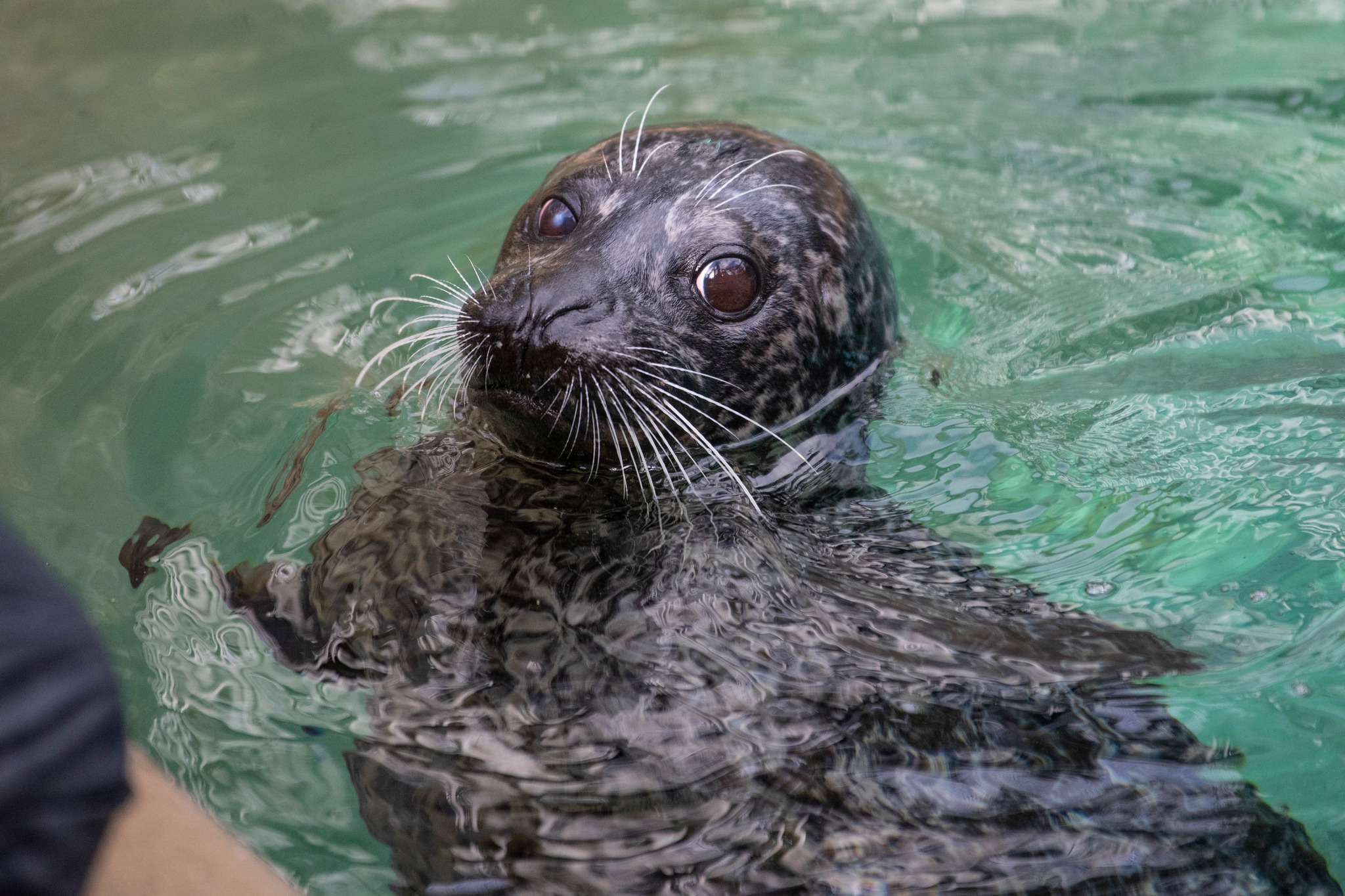- Introduction to Riley, a new harbor seal at the zoo, and her background.
- The Rocky Shores habitat and its significance for marine life conservation.
- Understanding harbor seals: Biology, behavior, and conservation status.
- The transition process for zoo animals: How Riley is adjusting to her new home.
- The role and responsibilities of zoos in wildlife conservation and public education.
Riley, the newest member of our zoological family, is a 13-year-old female harbor seal who has recently made her way from the Riverbanks Zoo & Garden to our sanctuary. As she acclimates to her new surroundings, she is gradually revealing her gentle nature, although she initially appears a bit reserved. Observers are welcomed to view Riley alongside our seals and sea lions in the Rocky Shores habitat. Her presence here underscores multiple vital aspects of modern zoo management and wildlife conservation.
The Rocky Shores habitat, home to Riley and other pinnipeds, is a meticulously designed environment mirroring the natural oceanic conditions essential for marine mammals‘ well-being. Within this habitat, Riley can engage in behaviors typical to her species, such as swimming, diving, and resting on rocky surfaces. Creating such an environment involves a combination of scientific insight and practical exhibition design. It is crucial for animal welfare, providing mental and physical stimulation that helps bridge the gap between captivity and wild habitats.
Riley’s inclusion in the Rocky Shores habitat is also an educational opportunity. Visitors can witness firsthand the ecology of harbor seals and their interactions with other species like sea lions. This observation is vital in fostering an understanding of marine ecosystems among the public. Through well-planned exhibits, zoos offer insights into the intricate web of life and the importance of each species within it.
Harbor seals, scientifically known as Phoca vitulina, inhabit the North Atlantic and Pacific Oceans. They showcase fascinating biological and behavioral traits. Typically growing up to six feet in length and weighing between 180 and 285 pounds, these seals are known for their spotted coats, which vary in color. Harbor seals are generally solitary but are known to show gregarious behaviors during the breeding season and in haul-out spots.
Riley’s arrival offers a unique opportunity to highlight the conservation status of harbor seals. While not currently endangered, harbor seals face threats from habitat destruction, climate change, and human interaction, such as fishing gear entanglement and pollution. Zoos play a critical role in educating the public about these challenges through stories and displays, motivating collective efforts to protect marine life.
The transition into a new home is a carefully managed process for any zoo animal. For Riley, leaving Riverbanks Zoo & Garden must have marked a significant change, but now, as she settles into the Rocky Shores habitat, it’s evident that a structured acclimation process, overseen by experienced keepers, supports her well-being. This transition involves close monitoring of the new animal’s health and behavior and integration with existing animals under controlled circumstances to avoid stress or aggression.
Riley’s adjustive phase is crucial as it establishes her comfort and well-being in the new setting. Her initial shyness, mentioned by her keepers, aligns with typical adaptation behaviors in many animals. Yet, her sweetness and growing comfort are promising signs of successful integration. Such positive acclimation processes are integral to achieving long-term success in zoo management.
Zoos today are frameworks of public education and conservation efforts. Beyond offering recreational spaces, they drive the conversation around biodiversity and ecosystem preservation. By housing species like Riley, zoos serve as custodians of wildlife, participating in breeding programs for endangered species, contributing to field studies, and collaborating with conservation organizations globally.
Moreover, through interactive exhibits, educational programming, and outreach initiatives, zoos play a pivotal role in raising awareness about wildlife conservation. They inform the public about the impact of human activities on marine ecosystems and inspire supportive conservation actions. In creating meaningful connections between people and animals, zoos fuel a collective drive towards more sustainable interaction with nature.
As Riley continues to find her footing in her new habitat, she is more than an individual marine mammal navigating a new environment; she embodies the broader mission of protecting our planet’s biodiversity. Her presence emphasizes the intricate relationship between zoos, wildlife conservation, and public engagement. Each day Riley spends thriving in her new environment is a testament to the significance of well-managed zoological settings. They act as sentinels of knowledge, passion, and advocacy for wildlife preservation.
Through observing animals like Riley, audiences can appreciate the marvel of marine life, understand its vulnerabilities, and recognize the collective responsibility to protect these magnificent creatures and their habitats. Zoos provide a bridge to a deeper understanding of our shared world and inspire future generations to champion the cause of conservation with diligence and empathy.
*****
Source Description
Meet Riley! Our newest addition, a 13-year-old female harbor seal, joined our family from Riverbanks Zoo & Garden. Riley is settling in nicely and getting comfortable in her new home. Her keepers say she is a bit shy but incredibly sweet as she’s adjusting to life here. Guests can see Riley in the Rocky Shores habitat with our seals and sea lions. 🦭


